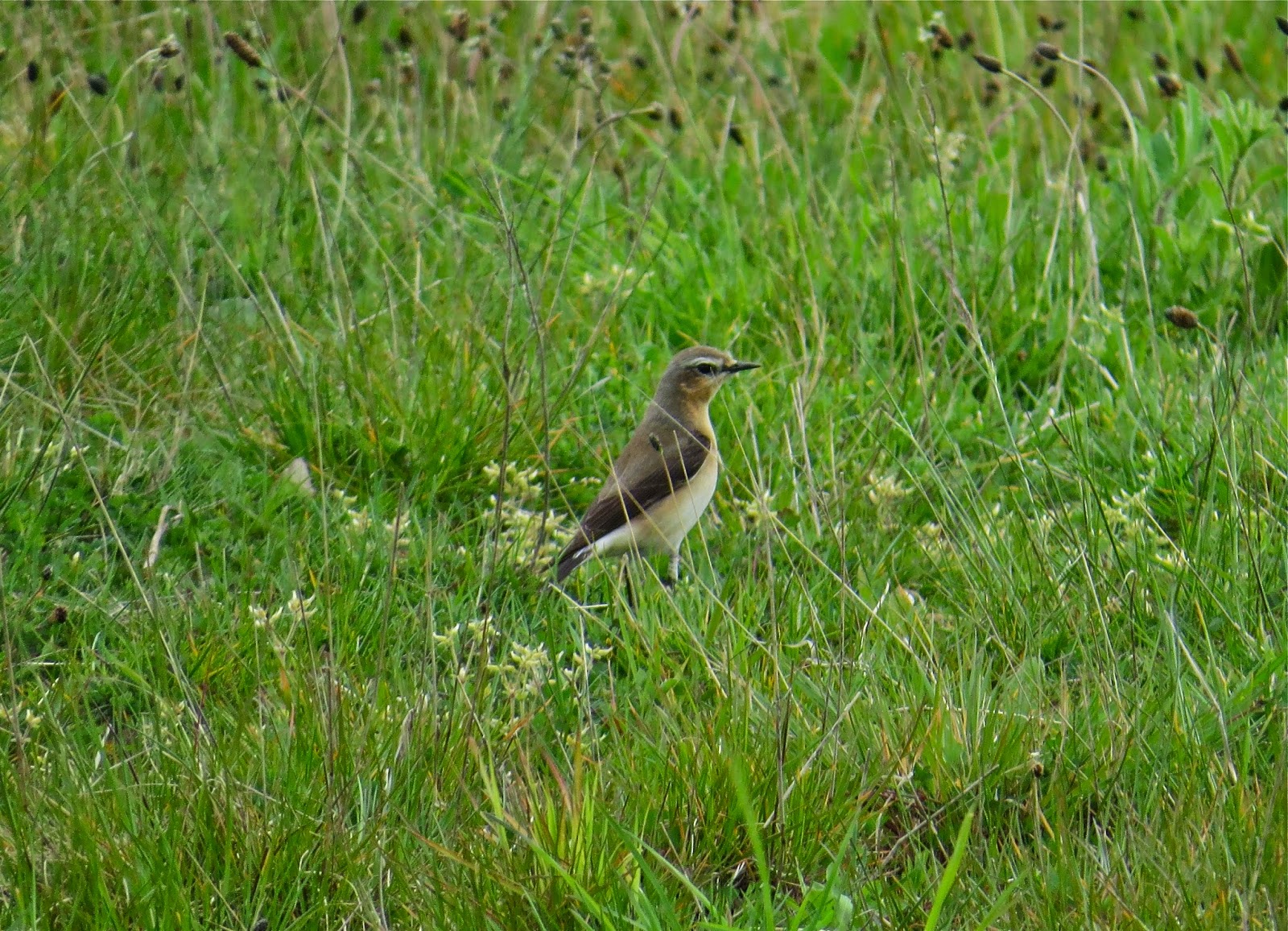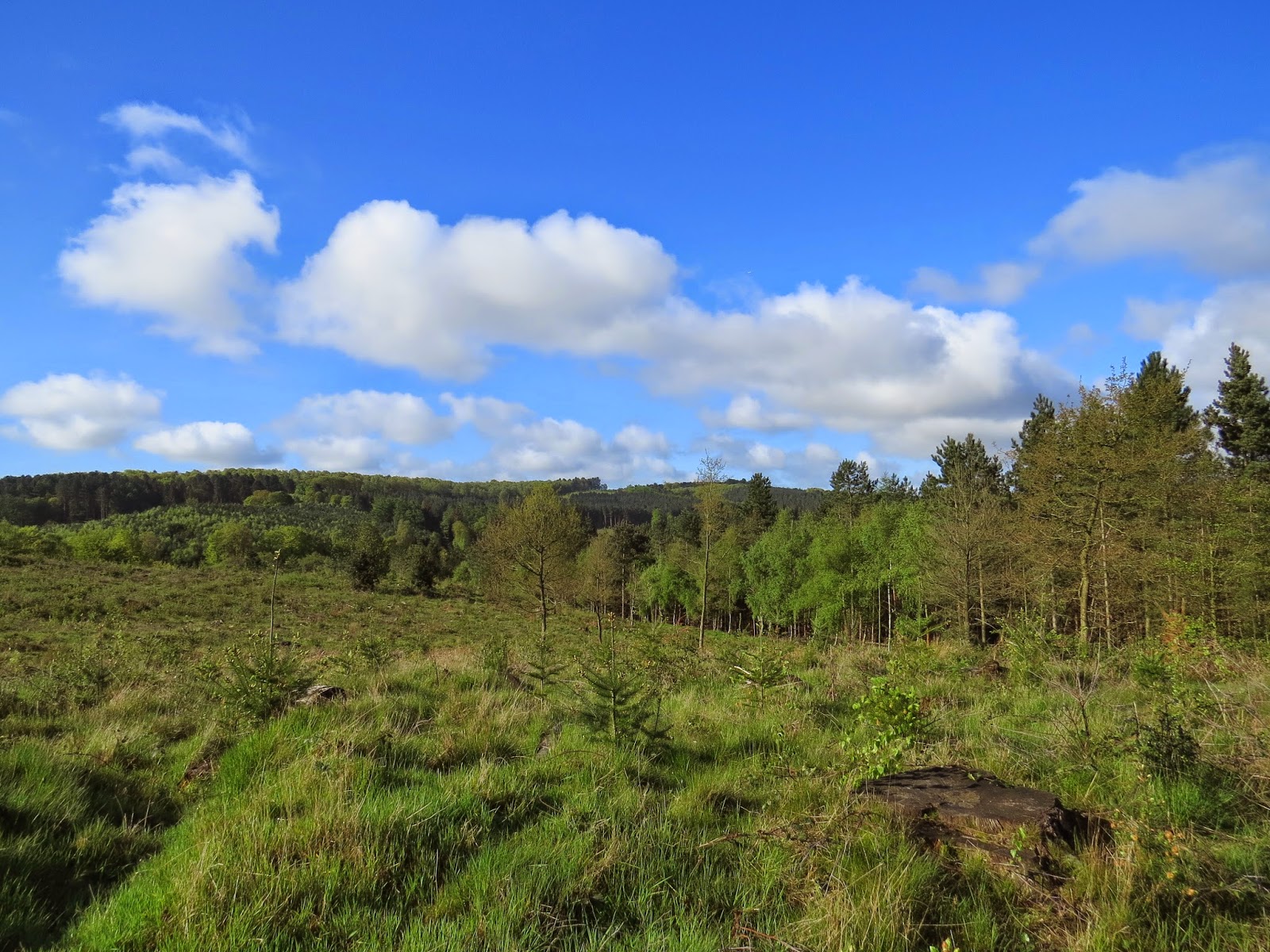 |
| SHORT-TOED EAGLE (second-summer) Morden Bog NNR, Wareham, Dorset. Photo by Chris Bromley |
Following a week of emotional exhaustion and heartache over my dear old nan being admitted to hospital, today was supposed to be a day of rest and relaxation. Jules Allen had kindly offered to take Dave Hutton and I on a trip to Devon where we could soak up the sun, admire a few birds and help put our stresses and strains to the back of our mind for a short while. The best laid schemes of birds (not mice) and men hey?
For a Spring trip we had a relatively late 7.00am start but within a few hours we had found ourselves at Newport Wetlands RSPB reserve in Gwent. The first target for the day was a singing SAVI'S WARBLER and within a few minutes of arriving there it was, reeling away at the edge of the phragmites bed. I have heard quite a few of these elusive locustella warblers up and down the length of Great Britain however this was only the second I have actually seen following a showy bird up at Leighton Moss RSPB reserve in May 2003.
 |
| An atmospheric shot of the singing male SAVI'S WARBLER Newport Wetlands RSPB, Gwent. Photo by Dave Hutton |
Other species included a drake Garganey in flight, several Pochard, a distant Marsh Harrier and a squealing Water Rail or two. There were also several Cetti's Warbler, a scattering of Lesser Whitethroat and the odd 'pinging' Bearded Tit. With the SAVI'S WARBLER becoming increasingly quiet and elusive it was time to make a move out of South Wales. As we made our way east towards the Severn Bridge though, the MEGA alert on my pager wailed away providing us with an exciting nugget of rarity information. A SHORT-TOED EAGLE had allegedly been present perched up in a tree at Morden Bog earlier on in the morning before flying off towards Poole Harbour.
For a nanosecond we contemplated amending our plans and heading down into Dorset. Since suffering the distress of not being on the Isles of Scilly during that fantastic year of 1999, I had more or less accepted that I would never see a SHORT-TOED EAGLE in Britain. I knew at some stage I would pull back all the other rare goodies which that infamous year provided, but there was almost no chance I would ever add such a magnificent raptor to my British List. With that in mind we continued our journey south, down through Somerset and into Devon for the next leg of our trip.
Following a near death experience with me lying fast asleep on the back seat, Jules practicing an emergency stop and me becoming painfully wedged in the footwell behind their seats, we finally arrived at Bowling Green Marsh RSPB at Topsham. Our main target here was a diminutive first summer ROSS'S GULL, an enigmatic species of the high Arctic. Unfortunately though there had been no sign of this rarity for well over a hour. After scanning the reserve for a while we decided to scour the Exe Estuary instead. With the tide out there was a good chance we could relocate the bird feeding out on the mudflats, and to his credit Jules did just that within a few short minutes.
The key features of the bird could just about be distinguished as it plodded around distantly in the mud, but I was far from satisfied. I craved far better views of such a fantastic rarity and so we made our way around to Exton village.
 |
| 'In Search of Ross's Gull' at Exton railway station. Photo by Dave Hutton |
From the railway station platform we had the ideal vantage point overlooking the Exe Estuary. There were some bemused looking train passengers wondering what we were up to, but undeterred we managed to locate the ROSS'S GULL once more as it extracted morsels of food from the rich estuarine surface. This time the views were much improved, especially when it flew around with the larger Black-headed Gulls as a comparison. I had only seen this species once before in Britain when we twitched an adult bird on the Plym Estuary back in February 2002. Other species in the area included plenty of Little Egret, around 70 Black-tailed Godwit and a single Whimbrel.
 |
| The varied flora of Dawlish Warren NNR, Devon. Photo by Adam Archer |
It was then time to head down to the coast. After a hearty meal of fish and chips in Dawlish we scooted around to Dawlish Warren to have a quick mooch around. There was no sign of any Roseate Terns along the beach but we did see our first Sandwich Terns of the year fishing offshore. Other than a pair of Stonechat and a nice family of Linnet there was not much else going on and so we decided to call it a day.
As we pulled out of the car park just before 5.00pm though, another pager message came through that nearly caused me to suffer a cardiac arrest. As for my other co-birders though, they seemed to exude an unbelievable attitude of nonchalance. Perhaps they had not heard me correctly the first time..... "THE SHORT-TOED EAGLE IS BACK!" I yelled. We were just seventy miles away from Morden Bog and this pair of twonks showed about as much excitement and enthusiasm for it as I would watching an England football friendly. To be fair to them both, after the initial shock had dissipated they did not need much coaxing for us to head out east as fast as Jules's Skoda could carry us.
For nearly two hours we all suffered the most stressful of journies. For every caravan we got stuck behind though, for every lorry that meandered its way along with only a care for its fuel efficiency and for every silver-haired coffin dodger that pulled out in front of us, we received one positive message on the pager. It was still there, it was still there..... IT WAS STILL THERE! With the weather continuing to become increasingly overcast and as every fraction of a degree that the temperature dropped, it improved the chances that the mighty, serpent scoffing, raptor would remain in situ. Then again, what if it was mobbed by an angry corvid or what if an over eager photographer got too close and spooked it? Mary mother of God, the tension was unbearable.
Forgive me but the next stage of events is a bit of a blur. I remember us driving along the road that cuts through Morden Bog and noticing out in the distance a line of birders perched up high along a ridge in the middle of the open heathland. I also remember the delighted faces of several birders who we met coming back in the opposite direction. "It's still there!" they all repeated. Both physically and mentally exhausted, we too finally made it up to that very same ridge. A kind fellow quickly ushered me over to his scope so I could have a peek and there it was, glaring back at me with its piercing golden eyes, Britain's third ever SHORT-TOED EAGLE.
 |
| SHORT-TOED EAGLE (second-summer) Morden Bog NNR, Wareham, Dorset. Photo by Chris Bromley |
Although quite distant we enjoyed some fabulous views of the bird as it carefully surveyed the area from its perch in a favoured pine tree. Occasionally the eagle would move a little as a Magpie and then a Jay flew in to check out the rare visitor from southern Europe. It was obviously well settled though and no doubt intended to use that particular tree to roost in overnight. As we admired the beast for over a hour the occasion was made even more atmospheric with Dartford Warblers singing and Cuckoos calling in the background. It was one of those ultimate birding experiences that will stay with us for as long as we live.
 |
| The SHORT-TOED EAGLE twitch! Morden Bog NNR, Wareham Forest, Dorset. Photo by Adam Archer |


































